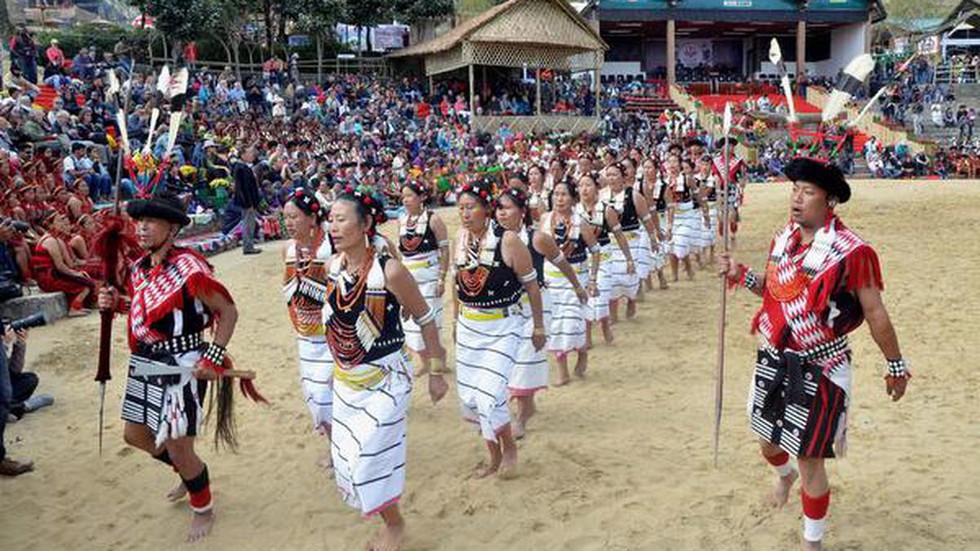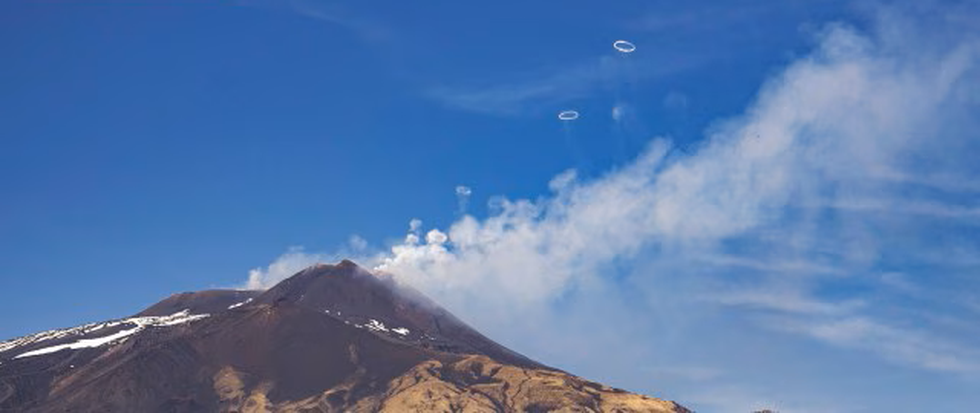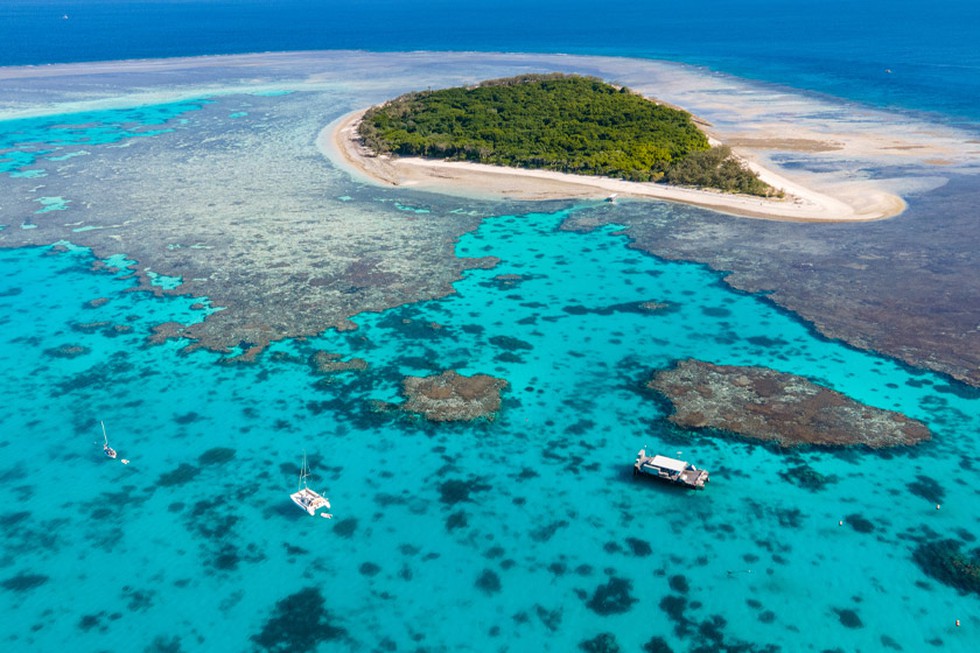
About Muria tribe:
- Location: They are located in the states of Telangana, Andhra Pradesh, Chhattisgarh and Odisha. They speak Koya, which is a Dravidian language.
- The Muria settlements are known as habitations of Internally Displaced People (IDPs), whose population is around 6,600 in A.P., and they here referred to as ‘Gutti Koyas’ by the native tribes.
- They have progressive perspective towards marriage and life as a whole. The biggest example being the Ghotul (a commune or dormitory), which is meant to create an environment for Muria youth to understand their sexuality.
- Gutti Koyas’ The held ST status in Chattisgarh but they were not granted ST status in their migrated states such as Telangana.
2. What is Article 371?

About Article 371:
- Article 371, under part XXI of the Indian Constitution, grants some temporary, transitional and special powers for certain States. It has been part of the Constitution since 26 January, 1950.
- However, Articles 371(A-J) was brought in via amendments through Article 368.
- Article 371:
- It deals with the States of Maharashtra and Gujarat. As per the provision, the Governor of Maharashtra has a special responsibility to establish separate development boards for Vidarbha, Marathwada, and the rest of the State.
- The Governor of Gujarat has a similar responsibility towards Saurashtra, Kutch and the rest of Gujarat.
- Article 371A:
- Under the provision, no Act of Parliament about the religious or social practices of the Nagas, their customary law and procedure, including civil and criminal justice matters, and ownership or transfer of land and resources will apply to Nagaland, unless the State’s Legislative Assembly passes a resolution to do so.
- Article 371B:
- It deals with Assam and was brought in 1969. It allows the President to deal with the Constitution and functioning of a committee of the Legislative Assembly comprising members elected from the tribal.
- Article 371C:
- It applies to Manipur and was inserted into the Constitution in 1972. It provides for the constitution of a committee of legislators from the Hill Areas of Manipur.
- Articles 371D and E:
- It includes special provisions for Andhra Pradesh and Telangana.
- The President can pass an order to provide equitable opportunities and facilities to people belonging to different parts of Andhra Pradesh in public employment and education.
- Article 371F:
- It is applicable to Sikkim and it states that the State Legislative Assembly shall consist of at least 30 members.
- Article 371G:
- It applies to Mizoram. It includes special provisions to preserve the religious and social practices, customary law, and procedure of Mizos in Mizoram, as well as for the administration of criminal and civil justice, besides ownership and transfer of land.
- Article 371H:
- It confers a special responsibility on the Governor of Arunachal Pradesh concerning law and order.
- Article 371I:
- It relates to Goa. It requires the Legislative Assembly of Goa to consist of not less than 30 members.
- Article 371J:
- It accords special status to the Hyderabad-Karnataka Region (Kalyana Karnataka), and provides for the establishment of a separate development board for the area.
2. Whooping Cough

About Whooping Cough:
- It is a highly contagious infection which impacts the respiratory tract and is caused by Bordetella pertussis bacteria. It is particularly severe in infants and in case of complications may lead to pneumonia and even death.
- How does whooping cough spread?
- A person catches this bacteria via droplets when an infected person coughs or sneezes.
- It attaches itself to the throat lining and then produces toxins which damage hair-like projections which clear debris and mucus.
- This leads to inflammation in the airways and causes severe coughing fits.
- Symptoms
- It begins with cold-like symptoms accompanied with low-grade fever. As it progresses, coughs get accompanied with a "whooping" sound and these spells may last for a while leading to vomiting.
- Sleep apnea in children.
- Treatment: Diphtheria, tetanus and pertussis (DTaP) vaccines.
3. Members of Parliament Local Area Development Scheme

About Members of Parliament Local Area Development Scheme:
- It is an ongoing Central Sector Scheme which was launched in 1993-94.
- Objective: The scheme enables the Members of Parliament to recommend works for creation of durable community assets based on locally felt needs to be taken up in their constituencies in the area of national priorities namely drinking water, education, public health, sanitation, roads etc.
- Annual MPLADS fund entitlement per MP constituency is 5 crore.
- Lok Sabha Members can recommend works within their Constituencies.
- The Rajya Sabha Members of Parliament can recommend works in one or more districts in the State from where he/she has been elected.
- The Nominated Members of the Lok Sabha and Rajya Sabha may select any one or more Districts from any one State in the Country for implementation of their choice of work under the scheme.
- MPs are to recommend every year, works costing at least 15 percent of the MPLADS entitlement for the year for areas inhabited by Scheduled Caste population and 5 per cent for areas inhabited by Scheduled Tribe population.
- In case an elected MP wishes to contribute MPLADS funds outside the constituency or the State/UT, they can recommend work up to Rs 25 lakh in a financial year.
- MPs do not directly receive funds under MPLADS. The Centre directly transfers the sanctioned amount in two installments of Rs. 2.5 crore to the district authorities of the concerned MP’s nodal district after a recommended project gets approval.
- Implementation:
- The role of an MP is, however, limited to the recommendation of a project.
- The onus is on the district authority to sanction, execute and complete the recommended project within a particular timeframe.
- Nodal Ministry: The Ministry of Statistics and Programme Implementation has been responsible for the policy formulation, release of funds and prescribing monitoring mechanism for implementation of the Scheme.
4. Volcanic Vortex Rings

About Volcanic Vortex Rings:
- They are generated when gas, predominantly water vapour, is released rapidly through a vent in the crater. The rings can remain in the air for up to 10 minutes, but tend to disintegrate quickly if conditions are windy and turbulent.
- It was first observed at Etna and Vesuvius in Italy in 1724.
- In more recent times, volcanic vortex rings have been observed at volcanoes such as
- Redoubt in Alaska, Tungurahua in Ecuador, Pacaya in Guatemala, Eyjafjallajökull and Hekla in Iceland, Stromboli in Italy, Aso and Sakurajima in Japan, Yasur in Vanuatu, Whakaari in New Zealand, and Momotombo in Nicaragua.
Key facts about Mount Etna:
- It is sometimes referred to simply as Etna, is an active volcano on the east coast of Sicily, the largest island in the Mediterranean Sea.
- Etna’s peak is the highest in Italy south of the Alps, and it is Europe’s largest and one of the most active volcanoes.
- Etna’s summit has five craters, which are responsible for most of the volcano’s eruptions; there are also “flank” eruptions that occur out of 300-odd vents of varying sizes along the slopes of the mountain.
- It has been a UNESCO World Heritage Site since 2013.
5. What is the Science Based Targets Initiative (SBTi)?

About Science Based Targets Initiative (SBTi):
- It is a global initiative established in 2015 that aims to encourage and support companies to set science-based targets (SBTs) to reduce greenhouse gas emissions and limit global warming to well below 2°C above pre-industrial levels.
- The SBTi is a partnership between CDP, the United Nations Global Compact, the World Resources Institute (WRI) and the World Wide Fund for Nature (WWF).
- It involves setting targets that are consistent with limiting warming to 1.5 °C above pre-industrial levels, which is the more ambitious goal of the Paris Agreement.
- Companies can have their targets independently verified and approved by the SBTi, which helps to ensure that they are aligned with the latest science and are in line with the goals of the Paris Agreement.
- By setting science-based targets, companies can demonstrate their commitment to addressing climate change and reducing their carbon footprint.
- The SBTi distinguishes between near- and long-term goals and commitments.
- Near-term targets show how organizations intend to reduce emissions over the next 5-10 years, crucial for significant progress by 2030 and a prerequisite for net zero targets.
- Long-term targets indicate how organizations need to reduce their emissions to achieve net zero, according to the criteria of the SBTi Corporate Net-Zero Standard, by 2050 at the latest (2040 for the energy sector).
- SBTi oversees the SBTi Net-Zero Standard, a pioneering framework for corporate net-zero target establishment.
- It is the world’s only framework for corporate net-zero target setting in line with climate science.
- It provides the guidance and tools companies need to set science-based net-zero targets.
6. What is Vakalatnama?

About Vakalatnama:
- It is a legal document in India that authorizes an advocate to represent a party in court proceedings.
- The term "Vakalatnama" is derived from two words: "Vakalat," which means authority or power of attorney and "Nama," which means a document.
- When a person engages the services of a lawyer to represent them in a legal matter, they sign a Vakalatnama, which formally appoints the lawyer to act on their behalf.
- It outlines the scope of the lawyer's authority, the specific case or matter for which representation is sought and other relevant details. It is also known as a memo of appearance, Vakilat Patra, VP.
- There is no mention of any particular definition of Vakalatnama in the Civil Procedure Code, 1908, or the Power of Attorney Act, 1882.
- The meaning of Vakalatnama is defined in the Advocates Welfare Fund Act, 2001, under which “Vakalatnama” includes a memorandum of appearance or any other document by which an advocate is empowered to appear or plead before any court, tribunal or other authority.
- The holder of the vakalatnama is called a pleader, an advocate, counsel, vakil, or an attorney who is authorized to accept the vakalatnama on behalf of his client or party of the litigation.
- Who can authorize a Vakalatnama?
- An aggrieved person can authorize a Vakalatnama.
- Anybody holding the Power of Attorney for the aggrieved person.
- Anybody representing the aggrieved person in business or trade in that jurisdiction.
- A Vakalatnama can also be authorized by a joint party in a case in order to appoint either a set of advocates or the same advocate.
- A good Vakalatnama should contain the following:
- The date the Vakalatnama would be executed
- The name of the case/cases in which the advocate is being appointed
- The name of the court/courts in which the advocate is being appointed
- The name of the person authorizing the Advocate/advocates
- A vakalatnama can be revoked or withdrawn by the client at any time. However, it's important to follow the proper legal procedures for revocation, which may vary depending on the jurisdiction.
- No Vakalatnama is needed for performing other legal work such as giving opinions, sending notices, drafting petitions, or other documents.
7. Key Facts about Great Barrier Reef

About Great Barrier Reef:
- It is a complex of coral reefs, shoals and islets in thePacific Ocean. It is located off the northeastern coast of Australia in the Coral Sea. It is the longest and largest reef complex in the world. It is the largest living structure on Earth.
- The reef, which is large enough to be visible from space, is made up of nearly 3,000 individual reefs and over 900 islands. UNESCO has declared the Great Barrier Reef a World Heritage Site.
- Much of the Great Barrier Reef is a marine protected area, managed by the Great Barrier Reef Marine Park Authority of Australia.
- Biodiversity:
- It is estimated that the reef is home to around 2000 species of fish and around 600 different coral species.
- It is also home to six of the seven known species of sea turtles.
8. What is Queqiao-2?

About Queqiao-2:
- It is a relay satellite launched by China to serve as a communications bridge between ground operations on earth and upcoming lunar probe missions on the far side of the moon until at least 2030.
- It has a 4.2-meter-diameter (13.8-foot) parabolic antenna that will be deployed once in space and is one of the largest sent beyond Earth orbit.
- It will be supporting China’sChang’e-6 lunar far-side sample return mission. It will further support the future Chang'e-7 and -8 lunar missions.
- It carries three science payloads: an Extreme Ultraviolet Camera (EUC), a Grid-based Energetic Neutral Atom Imager (GENA) and a very long baseline interferometer, the Lunar Orbit VLBI EXperiment (LOVEX).
- The mission will also be deploying two experimental CubeSats, Tiandu-1 and Tiandu-2, which will orbit the Moon to test navigation and communication technologies.
9. What is BepiColombo?

About BepiColombo:
- It is an international mission consisting of two spacecraft riding together to Mercury to orbit and study the planet from unique vantage points.
- It aims to study Mercury's magnetic field, its composition, the geology of its surface and its interaction with the solar wind. It will also investigate the planet's exosphere and study its geological history.
- It was launched in 2018, aboard an Ariane 5 rocket from French Guiana. It is scheduled to begin orbiting Mercury in 2025.
- It is a joint project between the European Space Agency (ESA) and the Japanese counterpart JAXA.
- ESA's Mercury Planetary Orbiter (MPO) will study the planet's surface and interior.
- JAXA's Mercury Magnetospheric Orbiter (MIO) will study the planet's magnetic field.
- The mission was named after Giuseppe "Bepi" Colombo, an Italian mathematician and engineer who made significant contributions to the understanding of Mercury's orbit. It will be the second mission ever to orbit Mercury.


























































































































































.png)
.png)
.png)
.png)
.png)


.png)
.png)
.png)





.png)
.png)






.png)
.png)
.png)
.png)
.png)
.png)
.png)
.png)
.png)

.png)







.png)
.png)


.png)
.png)
.png)


.png)

.png)
.png)





.jpg)

.png)
.png)


.png)

.png)
.png)
.png)

.jpg)

.jpg)


.png)

.png)
.png)
.png)
.png)
.png)
.png)
.png)
.png)
.png)
.png)




.png)

.png)





.png)
.png)
.png)
.png)
.png)
.png)
.png)
.png)
.png)
.png)
.jpg)
.jpg)

.png)
.png)
.png)
.png)
.png)
.png)
.png)
.png)
.png)
.png)
.png)
.png)
.png)
.png)
.png)
.png)
.png)
.png)
.png)
.png)
.png)
.png)



.png)
.png)

.jpg)
.jpg)


.jpg)
.jpg)
.jpg)
.jpg)
.jpg)

.jpg)








.jpg)
.jpg)
.jpg)
.jpg)
.jpg)

















.jpg)
.jpg)







.jpg)


















.jpg)
.jpg)






























































































.jpg)
.jpg)


























.jpg)

.jpg)










.jpg)








.jpg)




.jpg)










.jpg)


















.jpg)












































.jpg)














.jpg)
.jpg)
.jpg)





.jpg)

.jpg)
.jpg)





































































.jpg)


































.jpg)
.jpg)
















































.jpg)












.jpg)


.jpg)




.jpg)
.jpg)
.jpg)

.jpg)
.jpg)
.jpg)
.jpg)

.jpg)
.jpg)
.jpg)

.jpg)
.jpg)
.jpg)
.jpg)
.jpg)
.jpg)
.jpg)
.jpg)

.jpg)


.jpg)
.jpg)
.jpg)
.jpg)
.jpg)
.jpg)
.jpg)
.jpg)
.jpg)
.jpg)











.jpg)
.jpg)





.jpg)
.jpg)
.jpg)
























.jpg)
























.jpg)









.jpg)
.jpg)







.jpg)
.jpg)









































.jpg)
.jpg)
.jpg)
.jpg)
.jpg)

.jpg)
.jpg)
.jpg)
.jpg)
.jpg)


.jpg)
.jpg)
.jpg)
.jpg)
.jpg)

.jpg)
.jpg)
.jpg)
.jpg)
.jpg)
.jpg)
.jpg)
.jpg)
.jpg)
.jpg)
.png)

.png)
.png)

.png)
.png)
.png)
.png)


.jpg)
.jpg)

.jpg)
.jpg)
.jpg)

.png)
.png)
.png)
.png)
.png)
.png)
.png)

.png)
.png)
.png)
.png)
.png)
.png)
.png)
.png)
.png)
.png)





































































-min.png)



.png)




.png)








































